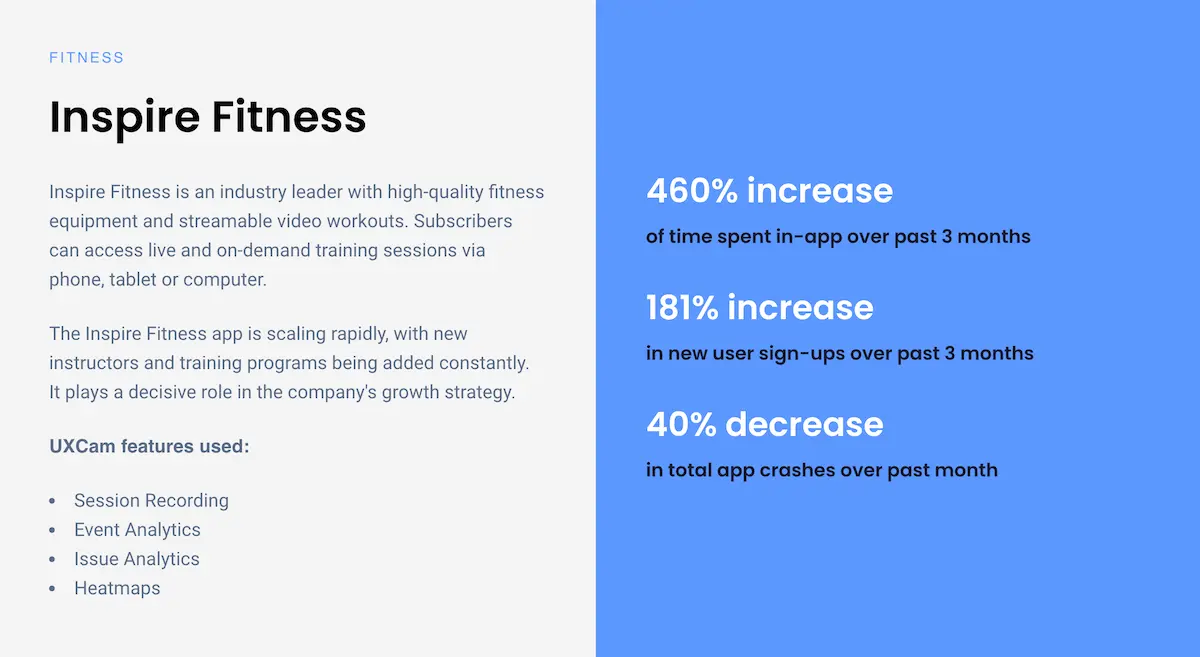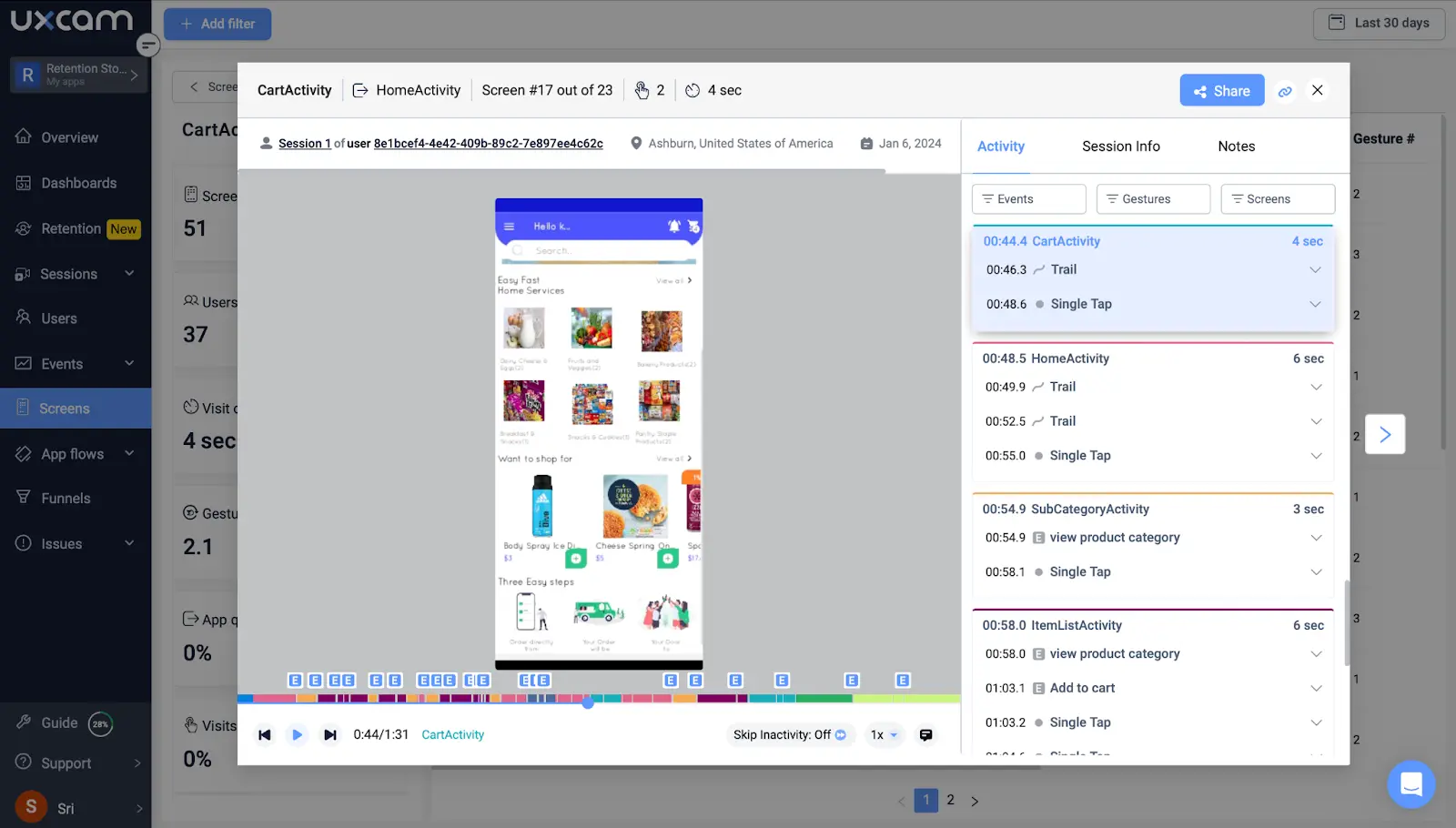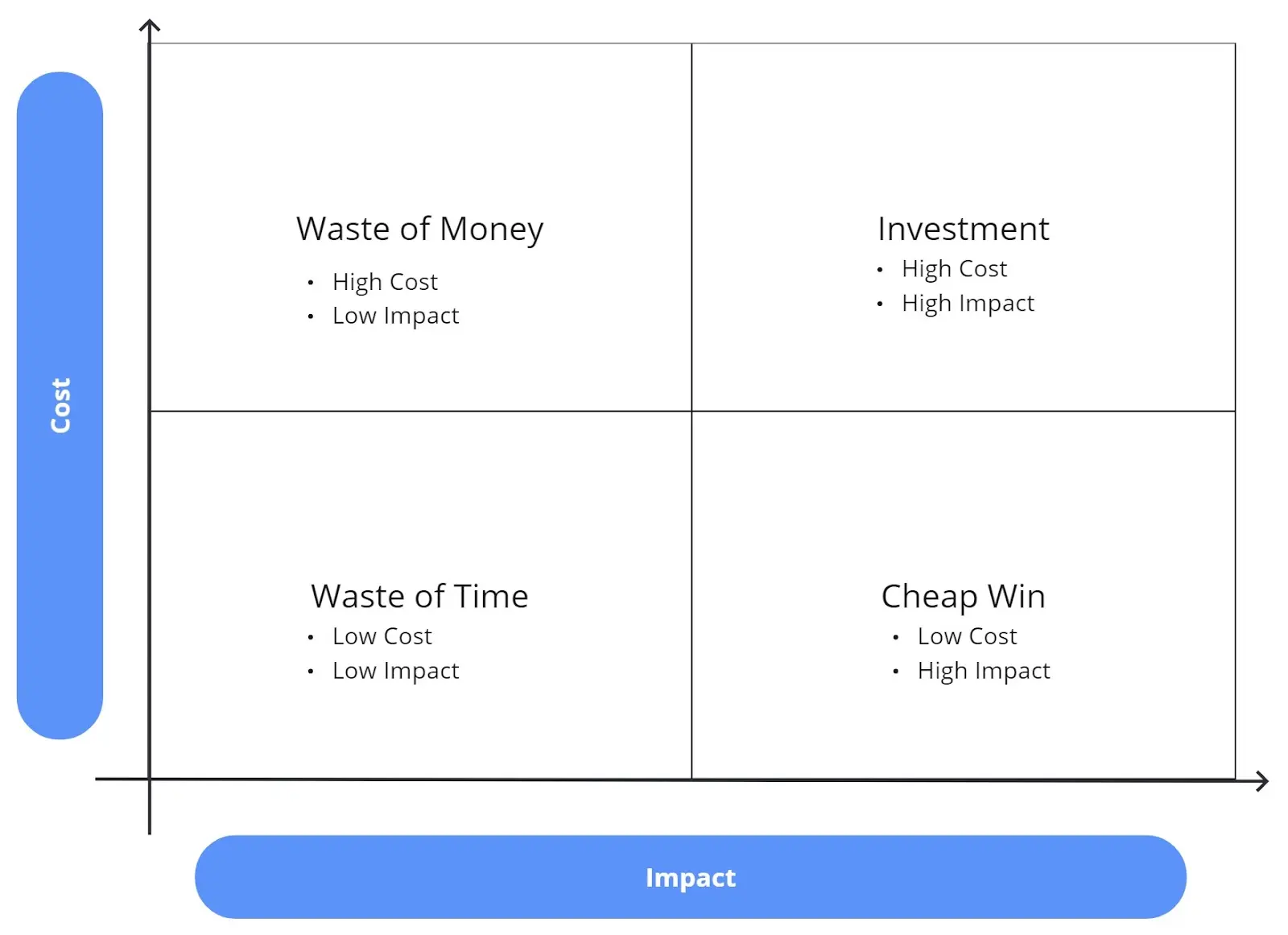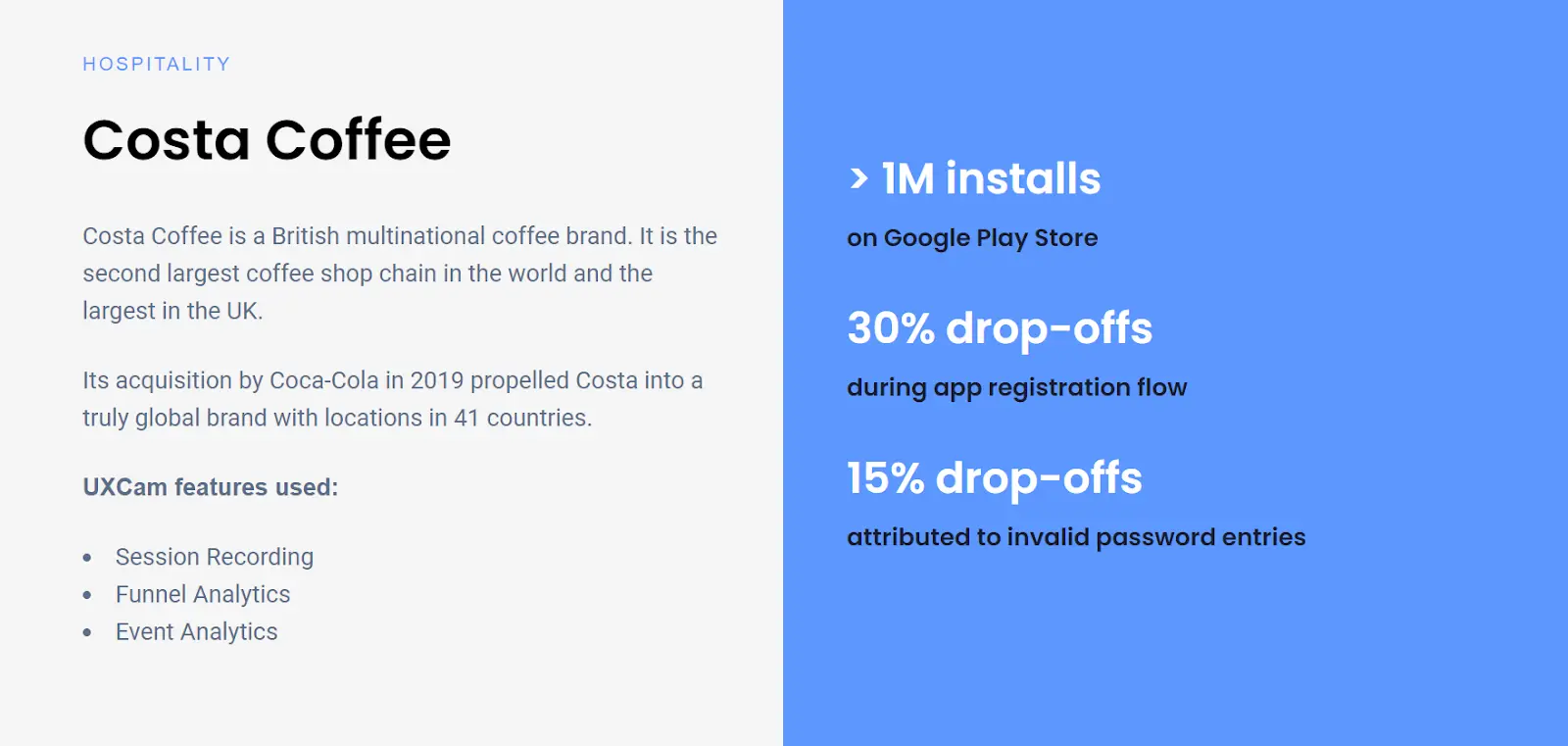Back to blog
4 MIN READ
Top 4 Strategies for Low Cost Mobile App Development
PUBLISHED
6 February, 2024

Product Analytics Expert
Mobile app development can be a costly endeavor, requiring significant resources and time to bring a product from conception to the hands of users. Developing an app can cost anywhere from $10,000 to $150,000 depending on its complexity. Highly advanced apps can start at around $300,000.
For mobile app development teams, finding innovative approaches and techniques to minimize costs while maintaining high-quality results is important.
At UXCam, we understand the importance of finding cost-effective solutions for mobile app development. That's why we’ve come up with a guide to help you achieve efficient results without breaking the bank.
Helpful summary
Overview: The article outlines strategies for reducing costs in mobile app development.
Why you can trust us: UXCam has helped 37,000+ apps minimize wasted development time and resources by using data to unlock opportunities.
Why it matters: Lowering development costs increases profitability, speeds up the break-even point, and allows for competitive pricing in a saturated market.
Action points: Focus on understanding user behavior through UXCam, build feature MVPs, and prioritize effectively.
Further research: Check out the UXCam blog for more insights into app development and user behavior.
What is low-cost mobile app development?
Low-cost mobile app development is the process of creating a mobile app at a lower cost than traditional methods.
There are tons of reasons why a developer or team might prioritize low-cost development, including:
Lack of outside funding or limited budget
Limited resources and technical expertise
A desire to test an idea without investing too much money upfront
We’ll get into the specifics of low-cost development in a bit, but first, let’s talk about why it’s important to consider this approach.
Why is it important to keep mobile app development costs low?
Increased profitability: The average profit margin for mobile app development can vary, but it is typically around 20-30%. Lower development costs can lead to higher profit margins, especially if the app is successful in the market.
Faster break-even point: The average annual cost of maintaining a mobile application is estimated to be around 15-20% of the initial development cost. Lower costs can help developers reach the break-even point faster, making the app profitable in a shorter time frame.
Competitive pricing: The global mobile app market is highly competitive, with approximately 35-36 billion app downloads every quarter. If the development costs are low, the app can be priced more competitively, potentially leading to higher download rates and user base.
How to minimize mobile app development costs
1. Implement data-driven development
Poor decision-making is a major source of increased costs in app development.
The solution? Data-driven development.
Data-driven development means justifying every development decision with insights generated from user behavior data, reviews and feedback, and market research. The goal is to reliably identify the features and functionality that are most important to users.
For example, take Inspire Fitness.

Inspire Fitness is a fitness app that's scaling rapidly—and that means they need to consistently push out new content for users. However, pushing out content that doesn’t resonate eats up valuable resources and alienates users.
To solve this problem, the team uses UXCam’s session replays, event analytics, and heatmaps to understand what instructors, content, and features users are most interested in. This means they can reliably replicate successes with less wasted resources.
2. Build MVPs for products and features
Another great low-cost development strategy is building MVPs for products (if you haven’t launched yet) and features (if you have).
The idea behind this strategy is simple.
You invest as little as possible by building only the essentials, launch to users to gauge their interest and gather feedback, and then either iterate or abandon the idea altogether. That way, you’re minimizing risk while still leaving the possibility for a successful product or feature.
One company that has success with this strategy is Basecamp. Whenever they build a new feature using their Shape Up methodology, they start with an MVP and continue to iterate on it based on user feedback.

Once you launch your MVP, you can use an analytics tool like UXCam to monitor it with features like:
Session replay
Heatmaps
Funnel analysis
Retention analysis
Smart events
3. Use a feature prioritization framework
A feature prioritization framework is a tool that makes it easier to make smart, cost-effective decisions about which features to build and when.
There are all kinds of frameworks out there, including:
MoSCoW (Must-have, Should-have, Could-have, Won't have) method
Kano model
Eisenhower matrix
Effort-Impact matrix
To really emphasize the cost-effective element, you can include cost as a criterion in whatever framework you use.

For example, an effort-impact matrix usually only takes effort and impact into account—but you can easily swap either effort or impact for cost. Alternatively, you can decide on a weight for each factor and use a weighted scoring system.
4. Keep your UI (and UX) simple
Complex UIs tend to be much more polarizing than simple, straightforward UIs.
Around 52% of users say the main reason they stop using a given app or site is aesthetics related to the UI. And on top of this, complex UIs take more time and resources to build. So, not only are they turning away potential users, but they're also costing you more money.
Avoid this trap by simplifying your UIs (and UX). Use an analytics tool like UXCam to track how users interact with your interface and remove any unnecessary elements that may be causing confusion or frustration.
This is exactly what Costa Coffee did.

The team used session replays and custom events to investigate why so many users were dropping out of their app registration flow. They ended up finding that their invalid password flow was too complex—users were abandoning the app rather than seeing it thorough.
Simplifying this flow boosted adoption by 15%.
Conclusion
Employing strategies for low-cost mobile app development is essential for mobile app development teams aiming to optimize resources without compromising on quality. UXCam, with its array of features and capabilities, emerges as a valuable ally in achieving these cost-effective strategies.
From understanding user behavior to driving engagement, UXCam provides actionable insights that empower development teams to make informed decisions, ultimately leading to efficient and cost-effective mobile app development.
Sign up now for free to get started with UXCam.
You might also be interested in these;
How to set up mobile app event tracking – the complete guide for 2024
Mobile app optimization techniques - Top 4 proven strategies
Mobile app churn rate & key benchmarks 2024
How to make an app prototype: A step-by-step guide
Strategic product planning - How to go from prototype to launch
AUTHOR

Tope Longe
Product Analytics Expert
Ardent technophile exploring the world of mobile app product management at UXCam.
What’s UXCam?
Related articles
Mobile app analytics
5 Best Session Replay Tools to Identify Mobile App UX Issues
We’ve highlighted the top picks on the market for session replay tools and dug into what they’re known for, who they’re best for, and what users say about...

Audrey Meissner
Mobile app analytics
How to improve mobile app performance
Discover the secrets to improving your mobile app's performance. From monitoring crashes and UI freezes to minimizing app launch delay; improve your user's experience...

Tope Longe
Product Analytics Expert
Mobile app analytics
Amplitude Mobile Analytics - Get the WHY with UXCam
Explore the key features and limitations of Amplitude mobile analytics and discover how integrating it with UXCam can provide a more comprehensive...

Tope Longe
Product Analytics Expert
